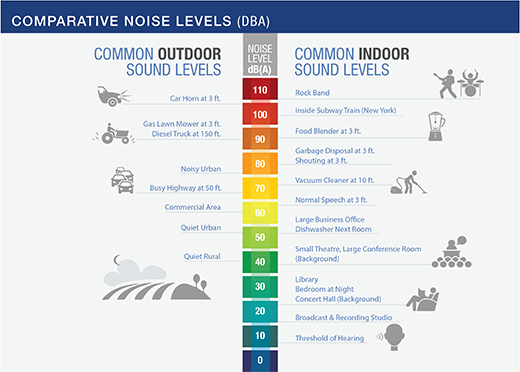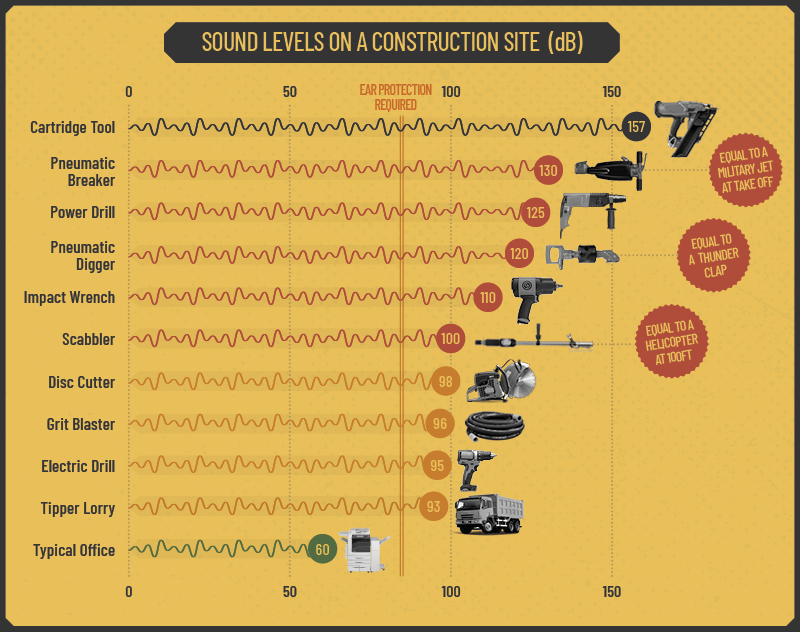Do many power tools generate harmful levels of noise? That’s a question many DIY enthusiasts and budding craftsmen might ponder. Well, my young friend, we’re here to shed some light on this noisy matter. Get ready to explore the world of power tools and discover whether they’re as loud as they seem!
As you dive into the world of DIY projects and woodworking, you’ll encounter an array of power tools. From drills to saws and sanders, these handy devices can make your projects a breeze. But have you ever wondered if all that noise they make is harmful? Is it just a part of the package, or should you take precautions to protect your hearing? Let’s find out!
When it comes to power tools and noise, there’s a lot to consider. We’ll uncover the decibel levels of popular tools, explore the potential risks of prolonged exposure, and reveal some tips to safeguard your ears while still enjoying your projects. So, buckle up and join us on this informative journey. It’s time to separate the decibels from the facts!
Discover if power tools generate harmful levels of noise and how to protect yourself from potential hearing damage. While some power tools can produce loud sounds, many manufacturers have taken steps to reduce noise levels. To mitigate noise exposure, wear hearing protection such as earplugs or earmuffs. Additionally, opt for power tools with lower decibel levels and look for models that incorporate noise-reducing features. Prioritize your safety by being mindful of noise levels when operating power tools.

The Impact of Power Tools on Noise Levels: Debunking the Myths
Power tools are essential for DIY enthusiasts and professionals alike. They help us complete projects faster and with greater precision. However, there has emerged a question regarding the noise levels generated by these tools. Do many power tools generate harmful levels of noise? In this article, we will explore the truth behind the concern and shed light on the potential risks associated with power tool noise. Let’s delve into this topic and separate fact from fiction.
Understanding Noise Levels and Decibels
Noise levels are measured using a unit called decibels (dB). To put things into perspective, a whisper is approximately 30 dB, while a normal conversation ranges between 60-70 dB. Noise becomes dangerous when it exceeds 85 dB, and prolonged exposure to levels above this threshold can cause hearing damage. Now, let’s consider power tools. While some generate noise levels above the safe range, it’s important to note that not all power tools pose the same risk.
Tools like drills, circular saws, angle grinders, and air compressors tend to generate higher decibel levels due to their motorized mechanisms and constant use. These tools can range from 85 dB up to 120 dB, depending on the specific model and operating conditions. However, this noise level alone does not necessarily indicate harm. What matters is the duration and frequency of exposure, as well as the use of hearing protection.
To ensure a safer working environment, it is important to choose power tools with lower noise levels when possible, follow recommended safety guidelines, and wear proper hearing protection to reduce the risk of hearing damage.
The Risk of Hearing Damage: Debunking the Myths
There are various myths surrounding power tool noise levels and their potential impact on hearing health. Let’s debunk some of these misconceptions and provide accurate information:
- Myth: Power tool noise can cause permanent hearing loss instantly. This is not entirely true. While exposure to high noise levels can cause temporary or permanent hearing damage, it usually occurs gradually over time. Regular and prolonged exposure to loud noise without hearing protection is the primary concern.
- Myth: Only the loudest power tools pose a risk. While it’s true that tools with higher decibel levels can potentially cause more damage, even lower-decibel tools can be harmful when used consistently for extended periods without hearing protection.
- Myth: Short-term exposure to power tool noise is harmless. Any exposure to loud noise carries some risk, even if it’s for short durations. Even a few minutes of exposure to high decibel levels can have a negative impact on hearing if repeated frequently.
It is essential to be aware of these myths and take necessary precautions to protect our hearing when using power tools. Knowing the facts can help us make informed decisions and maintain our hearing health in the long run.
Choosing Lower-Noise Power Tools: Considerations and Benefits
While it may not be possible to completely eliminate noise when using power tools, there are certain considerations to keep in mind that can help minimize the risks:
- 1. Look for tools with lower noise ratings: When purchasing power tools, check for noise ratings or specifications provided by the manufacturer. Look for tools labeled as “low-noise” or “quiet” to ensure lower decibel levels during operation.
- 2. Opt for battery-powered tools: Battery-powered tools often produce less noise compared to their corded counterparts. This is due to the absence of a motor and the use of quieter technologies such as brushless motors.
- 3. Use appropriate hearing protection: Regardless of the noise levels generated by the power tools in use, it is crucial to wear proper hearing protection. Earplugs or earmuffs can significantly reduce the risk of hearing damage by reducing the noise reaching the ears.
By following these considerations, you can not only mitigate the potential risks associated with power tool noise but also enjoy various benefits:
- Enhanced comfort: Choosing lower-noise power tools makes for a more comfortable working environment, reducing stress and fatigue.
- Better communication: Lower noise levels improve communication among colleagues or family members while working with power tools, ensuring clear instructions and efficient collaboration.
- Compliance with regulations: In certain areas, there are regulations in place regarding noise levels on construction sites, workshops, and other environments. Using quieter power tools enables compliance with these regulations.
Conclusion: Prioritizing Hearing Protection and Informed Decision-Making
While it’s true that many power tools generate noise levels that can be harmful to our hearing, it’s important to consider various factors such as duration of exposure, frequency of use, and use of hearing protection. By following recommended safety measures, considering quieter tool options, and utilizing appropriate hearing protection, we can reduce the risk of hearing damage while enjoying the benefits of power tools. Prioritizing our hearing health is crucial, so let’s make informed decisions and take proactive steps towards protecting our ears when working with power tools.
Key Takeaways: Do Many Power Tools Generate Harmful Levels of Noise?
- Power tools can generate harmful levels of noise, especially if used for long periods.
- Exposure to high noise levels can cause hearing loss and other health issues.
- Using ear protection, such as earmuffs or earplugs, can help reduce the risk of noise-related damage.
- Some power tools, like jackhammers and chainsaws, produce louder noise than others.
- It’s important to choose power tools with lower noise levels or opt for quieter alternatives whenever possible.
Frequently Asked Questions
When it comes to power tools, many people wonder if they generate harmful levels of noise. Understanding the impact of noise pollution and how it relates to power tools is important for both users and those nearby. Here are some commonly asked questions regarding the noise generated by power tools.
1. How loud can power tools get?
Power tools can generate a range of noise levels depending on the type and model. While some power tools produce moderate noise levels similar to conversational speech, others can reach much higher decibel ranges. Tools like chainsaws, jackhammers, and some handheld drills can produce noise levels that exceed safe thresholds, potentially causing hearing damage if proper precautions are not taken.
It’s important to note that even seemingly quieter power tools can still cause harm if used for extended periods or in enclosed spaces. Always check the manufacturer’s specifications for the noise level emitted by a power tool before using it.
2. Are there any regulations regarding power tool noise levels?
Yes, many countries have regulations to ensure that power tool noise levels are kept within safe limits. These regulations may establish maximum permissible noise levels for different types of power tools, especially those used in industrial or commercial settings. In some cases, these regulations may also require manufacturers to implement noise reduction measures in their products.
It is essential for both users and employers to be aware of and comply with these regulations to protect themselves and others from excessive noise exposure. Additionally, using personal protective equipment such as earplugs and earmuffs can further reduce the risks associated with power tool noise.
3. What can be done to reduce power tool noise?
There are several steps that can be taken to reduce the noise generated by power tools. One option is to choose power tools specifically designed with noise reduction features, as these will emit lower noise levels without compromising performance. Another approach is to use hearing protection devices such as earplugs or earmuffs to reduce the impact of noise on the user.
Additionally, applying sound-absorbing materials to the work area or using sound barriers can help minimize the propagation of noise to surrounding spaces. Regular maintenance of power tools, including proper lubrication and checking for loose parts, can also help reduce noise levels.
4. Can using power tools without proper hearing protection cause permanent damage?
Yes, using power tools without proper hearing protection can potentially cause permanent damage to your hearing. Prolonged exposure to high noise levels can lead to noise-induced hearing loss, which is often irreversible. The loud noise generated by power tools can damage the delicate structures within the ear, resulting in hearing loss or other hearing-related problems.
It’s crucial to prioritize your hearing health by using appropriate hearing protection when operating power tools. This can include wearing earplugs or earmuffs that are specifically designed to reduce noise levels. Regular breaks from using power tools and limiting exposure to loud noises can also help protect your hearing.
5. Are there any alternative power tools that produce less noise?
Yes, there are alternative power tools available that produce less noise compared to traditional models. Manufacturers are increasingly developing power tools with noise reduction features, such as brushless motors or vibration dampening technologies. These advancements help minimize the noise generated during tool operation.
Additionally, battery-powered cordless tools can often produce less noise compared to their corded counterparts. These tools offer the advantage of operating without the need for a constant power supply, reducing the noise caused by motors or fans. When looking for quieter power tool options, keep an eye out for models specifically advertised as “low noise” or “quieter operation.”

How to make a generator quieter – 9 Ways That Work!
Summary
Power tools can generate harmful levels of noise that can damage our hearing. It’s important to protect ourselves by wearing ear protection like earmuffs or earplugs. We should also be mindful of noise levels when using power tools and try to choose quieter models when possible.
It’s not just the loudness of the noise, but the duration that can cause damage. Prolonged exposure to loud power tool noise can lead to permanent hearing loss. By taking simple steps to protect ourselves, we can enjoy the benefits of power tools without risking our hearing health.
